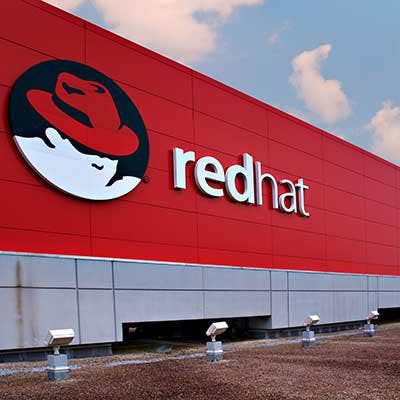Containers Powered IBM's Red Hat Deal, But Culture Is Essential To Realizing Its Potential

IBM's $34 billion deal for Red Hat was about nothing less than becoming the dominant force in hybrid cloud, the fastest growing segment of the cloud market, IBM CEO Ginni Rometty made clear.
Red Hat will enable Big Blue to realize that ambition with an open technology stack that spans on-premises and public cloud environments, delivering application portability, ease of deployment, and independence from any one provider's ecosystem.
That kind of hybrid and multi-cloud reach is possible largely because of the advent of containers. And for Red Hat, more specifically, the prescient decision four years earlier to embrace Kubernetes, the open source container orchestration technology first developed at Google.
"Ultimately, containers are going to be where everybody is going, and Kubernetes has become this de facto orchestration platform," said Bradley Brodkin, CEO of HighVail, a Red Hat partner based in Toronto.
[Related: 10 Acquisition Targets To Counter IBM's Red Hat Deal]
Red Hat will immediately propel IBM to "the current leader in a Kubernetes hybrid cloud platform," said Joe Dickman, senior vice president of Vizuri, a Red Hat consultancy based in Virginia that specializes in container implementations.
But once the acquisition closes and Big Blue brings Red Hat's portfolio under its roof, IBM will have new challenges to overcome if it wants to make good on the deal's promise, said Michael Conley, executive vice president of managed & cloud services at Sirius Computer Solutions, a large IBM and Red Hat partner.
It's not just about having the right technology, but a culture and leadership that supports the way customers want to use that technology, he said.
"IBM had a cloud story, and that cloud story always led to the IBM stack," Conley said. But "most people who are rewriting their apps are saying this is my chance for the first time to rewrite my apps and not be tied to a vendor. That was the magic of Red Hat."
To maintain the position it purchased atop the rapidly growing container market, IBM will need to reorganize to become "agile like their top competitors already are," Conley said. That means a departure from "The IBM Way.”
IBM leaders would be wise to learn from Red Hat, he said, and put its execs in leadership roles.
Red Hat commanded such a high price—a 63 percent premium on its market cap—largely because it took an "aggressive and risky approach" four years ago, Dickman said.
At the time, the Raleigh, N.C.-headquartered company decided to abandon OpenShift 2, and instead begin entirely rearchitecting OpenShift 3 as a Kubernetes-based container management platform, Dickman said.
Red Hat doubled-down on its Kubernetes bet at the start of this year when it snagged CoreOS, a pioneering startup with a mature Kubernetes platform called Tectonic.
"Red Hat capitalized on a fragmented and unsure marketplace for containers," Dickman said. "Now Red Hat had two significant Kubernetes distributions, each offering unique value propositions."
Combining OpenShift and Tectonic made hybrid cloud "Red Hat's market to lose," he said.
As Big Blue takes the reigns of those platforms, and adds its own Kubernetes ingredients, it must recognize the customer demands, and the culture, that have made Red Hat's open source hybrid cloud business thrive, Conley said.
"The toughest part of going to cloud isn't the technology," he said, but "the organizational challenges that are going to take place."
Conley has a unique view of how customers could benefit from the blockbuster deal. He came to Sirius, one of IBM's largest partners, when it acquired Forsythe, Red Hat's 2017 Innovation Partner of the Year, melding channel expertise in both technologies.
IBM would do well to deliver an "easy button" for customers struggling with cloud transformation, Conley said.
That means customers running legacy IBM solutions behind their own firewalls can use OpenShift to containerize new workloads and extend them into the cloud, all without having to branch out to new vendors.
"At end of day it's all about cloud, all about moving applications into the cloud, all about modernizing their applications," Brodkin said.
Brodkin believes that Big Blue will launch a comprehensive transformation project to maximize the benefits of Red Hat's portfolio.
That could entail migrating much of its software—a suite that includes thousands of titles—to open source, running on OpenShift, built on Red Hat Enterprise Linux, using Kubernetes for orchestration, and shifting from WebSphere to JBoss for middleware and application delivery.
"If nothing else, IBM is going to become the true software company they've claimed to be for a long time" Brodkin said.
Conley said IBM should avoid the impulse to transform Red Hat in its own image.
"The IBM Way has really struggled in the modern world, they've got to adapt," Conley said. "They’ve got the customers, they've got the databases, they've got the crown jewels."
The trick is balancing a stable base of customers on legacy gear and applications with a solution that makes it easy for them to deploy modern applications built on micro-services beyond the four walls of their data centers.
"Don’t make Red Hat IBM. Make IBM more like Red Hat," Conley said. "But appreciate your legacy business and bring it along."